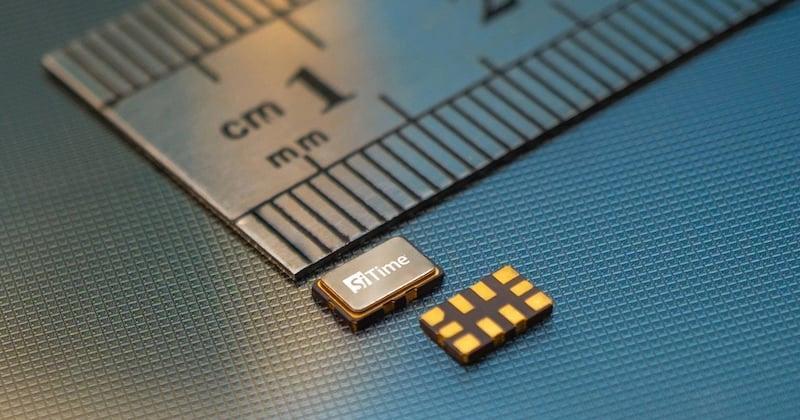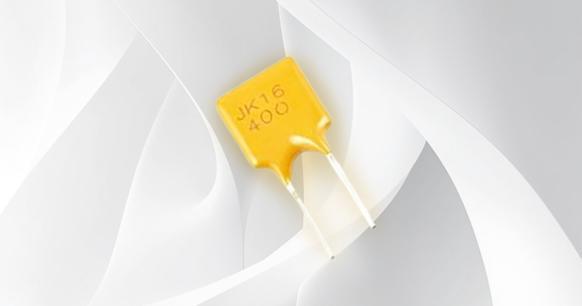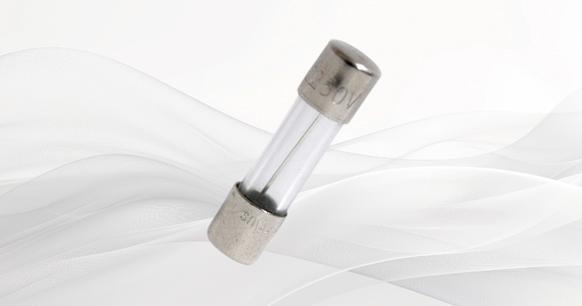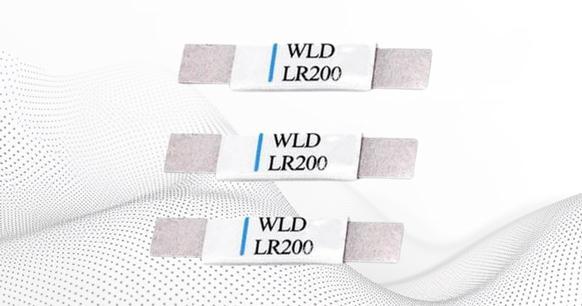
How does a Resettable Fuse Work?
A resettable fuse is a type of electronic protection component that safeguards against over-current. It is manufactured using a high-molecular organic polymer, which undergoes high pressure, high temperature, and sulfidation reaction processes. Conductive particle materials are added to the polymer, and it is then processed using special technology.
Resettable fuses
Catalog
1. Classification
2. How does a Resettable Fuse Work?
3. Principle of Action
4. Technical Standard
5. Resettable Fuse Selection
6. Applications
1 Classification
Resettable fuses can be classified into 2 types based on their materials:
1. Polymer PPTC;
2. Ceramic CPTC.
They can also be categorized into 2 different package forms:
1. Lead plug;
2. SMD patch.
Furthermore, they come in various voltage options such as 600V, 250V, 130V, 120V, 72V, 60V, 30V, etc.
The key advantages of polymer PPTC are:
- Very low zero-power resistance at room temperature
- High-current products with only a few milliohms
- Negligible power consumption in the circuit
- Relatively small volume
In delicate circuits, PPTC can be connected in series as a resettable thermal fuse for overcurrent protection. It has fast resistance changes within milliseconds and short recovery time due to its small heat capacity. Additionally, it is impact-resistant and provides cycle protection up to 8000 times.

Figure 1. Polymer PPTC Resettable Fuse Polymers
PPTC can be utilized as a resettable thermal fuse, demonstrating its performance and function to a certain extent in the circuit. This enables over-current protection and over-temperature protection to be achieved in the circuit. The main advantage of ceramic CPTC is its cost-effectiveness and ease of manufacturing. However, it does have drawbacks such as large resistance, volume, and in-circuit loss of tens to thousands of ohms, making it more suitable for small current overcurrent protection. When exposed to high temperatures and overheating, negative resistance effects may occur (reduced resistance). Additionally, it has a low protection speed of hundreds of milliseconds, a significant heat capacity, and a long recovery time. Its application range is relatively narrow. For instance; It cannot be used for rapid protection circuits, automobile wiring harness protection or PCB trace protection. Instead,it is mostly used for heating devices and some small-signal circuits where loss is not an important consideration.
2 How does a Resettable Fuse Work?
A resettable fuse is made up of specially treated polymer and carbon black distributed inside. During normal operation, the polymer tightly binds conducting particles outside the crystalline structure to form a chain-like conductive path. At this time, the resettable fuse is in a low resistance state, and the heat generated by the current flowing through it is small and does not change the crystal structure.
However, when the circuit experiences a short-circuit or overload, the large current flowing through the resettable fuse will cause the polymer to melt and rapidly increase in volume, creating a high-resistance state. This rapid decrease in operating current helps limit and protect the circuit from damage.
Once the fault is eliminated, the resettable fuse cools down and crystallizes again. As a result, its volume shrinks and conductive particles re-form a conductive path, returning it back to its low resistance state - all without needing manual replacement.
This process ensures that circuits are effectively protected while also being courteous on their own ability regain functionality after an electrical fault has been resolved.
3 Principle of Action
The resettable fuse operates on the principle of a dynamic balance of energy. When current flows through the resettable fuse, it generates heat due to the thermal effect of the current (there is a resistance value in the resettable fuse). Some of the heat generated is dissipated into the environment, but any remaining undissipated heat will increase the temperature of the resettable fuse element.
During normal operation, the temperature remains low and there is a balance between generated and emitted heat. When the resettable fuse is in a low resistance state, it does not operate. If there is an increase in current flowing through it or if ambient temperature rises, as long as there's a balance between generated and dissipated heat, no action will be taken by the fuse.
If at this point, current or temperature continues to rise causing more heat to be generated than dissipated, it will sharply increase the temperature of the resettable fuse. This small change in temperature results in a significant increase in impedance of the resetta blefuse element, putting it into a high-impedance protection state which limits current flow and causes a sharp decrease in current over a short period of time. This effectively protects the circuit from damage. As long as the heat generated from applied voltage is sufficientfor emit ted heat, the reset able fuse can always beIN action(high resistance). Once the applied voltage disappears, the resettable fuse the resets automatically.
4 Technical Standard
1) Zero Power Resistance Rating
PPTC thermistors should be labeled with their zero power resistance and the resistance range should be clearly marked on the outer packaging. After undergoing voltage and current tests, the percentage change in resistance (|ΔRi after-Ri before/Ri before-(Rj after-Rj before)/Rj before |) of each sample group should not exceed 100%.
2) PTC Effect
When we say that a material exhibits the PTC (Positive Temperature Coefficient) effect, it means that its resistance increases as temperature rises. For example, most metal materials demonstrate this effect by showing a linear increase in resistance with higher temperatures.
3) Non-linear PTC Effect
Materials that undergo a phase change will experience a significant sharp increase in resistance within a narrow temperature range spanning several to ten orders of magnitude – this is known as the nonlinear PTC effect. One example is conductive polymers like polymer PTC thermistors, which are highly beneficial for creating overcurrent protection devices.
4) Minimum Resistance (Rmin)/Maximum Resistance (Rmax)
At specific ambient temperatures, such as 25°C, prior to installation of self-recovery mechanisms, the resistance value of a particular type of polymer thermistor in the circuit falls within a specified range between Rmin and Rmax. This information can be found under the resistance column in product specifications.
5) Holding Current Ihold
The holding current refers to the maximum amount of current that can flow through a polymer PTC resettable fuse while it remains inactive. Under defined environmental conditions, this device can maintain its low-resistance state indefinitely without transitioning to high-resistance state. I hope these edits provide additional clarity and friendliness when communicating these technical concepts!
6) Action Current Itrip
This refers to the minimum steady-state current required for the resettable fuse series polymer thermistor to operate within a limited time and under specific environmental conditions.
7) Maximum Current Imax (Current Withstand Value)
Imax is the maximum operating current of the polymer PTC resettable fuse for safe operation in a limited state, also known as the current withstand value of the thermistor. Exceeding this value may cause damage to the thermistor that cannot be recovered. This value can be found in the current withstand column in the specification.
8) Leakage Current Ires
Ires refers to the current that flows through the thermistor when it is locked in its high resistance state.
9) Maximum Operating Current/Normal Operating Current
This represents the maximum current flowing through a circuit under normal operating conditions. The holding current of the polymer PTC resettable fuse used to protect the circuit is generally greater than under maximum ambient operating temperature.
10) Action
The polymer PTC resettable fuse changes from low resistance to high resistance when overcurrent occurs or when there is an increase in ambient temperature.
11) Action Time
Action time is defined as being from overcurrent occurrence until completion of action. For any specific polymer PTC resettable fuse, it should be noted that higher currents flowing through circuits or increased working environment temperatures will result in shorter action times.
12) Vmax Maximum Voltage (Voltage Withstand Value)
The Vmax refers to the maximum voltage that the polymer PTC resettable fuse can safely withstand under limited conditions, also known as the withstand voltage of the thermistor. It is important to note that exceeding this value may result in breakdown of the thermistor which cannot be recovered. This value is typically listed in the withstand voltage column in the specification.
13) Maximum Working Voltage
This refers to the maximum voltage across both ends of the polymer PTC resettable fuse under normal operating conditions, which is often equivalent to the voltage of the power supply in the circuit.
14) Conductive Polymer
In this context, conductive polymer refers to a composite material made of conductive particles (such as carbon black, carbon fiber, metal powder, metal oxide) filled with insulating polymer materials (such as polyolefin, epoxy resin).
15) Ambient Temperature
Ambient temperature is defined as the temperature of still air around a thermistor or a circuit with a thermistor element.
16) Operating Temperature Range
The operating temperature range represents the ambient temperature range within which the P element can work safely.
17) Maximum Working Environment Temperature
This indicates the highest ambient temperature at which it is expected for the component to work safely.
18) Power Loss
Power loss refers to energy consumed by the polymer PTC resettable fuse after activation and is calculated as product of leakage current flowing through thermistor and voltage across it.
19) High Temperature and High Humidity Aging
This involves measuring resistance change of polymer PTC resettable fuse before /after prolonged exposure to higher temp/ high humidity at room temp (150 hours 85°C +85% humidity).
20) Passive Aging Test
Measure the resistance change of the polymer PTC resettable fuse at room temperature before and after subjecting it to a higher temperature (such as 70°C or 85°C) for an extended period (e.g. 1000 hours).
21) Hot and Cold Impact Test
Evaluate the resistance value of the polymer PTC resettable fuse before and after subjecting it to temperature cycles, such as 10 cycles between -55°C and +125°C, at room temperature.
22) PTC Intensity β
Ensure that the PTC thermistor exhibits sufficient PTC intensity and does not display NTC phenomenon. β=lg R140°C/R room temperature≥5 R140°C, where R140°C is the rated zero-power resistance value at 140°C compared to room temperature.
23) Recovery Time
The recovery time after activation of the PTC thermistor should not exceed 60 seconds.
24) Failure Mode Test
During the failure mode test, ensure that in a failure state, the high polymer PCT thermistor only shows an open circuit or high resistance state with no low resistance state or open flame throughout the entire testing process.
5 Resettable Fuse Selection
1) Please determine the following parameters of the circuit:
- Maximum working environment temperature
- Standard working current
- Maximum working voltage (Umax)
- Maximum fault current (Imax)
2) Please choose a resettable fuse that can adapt to the circuit's maximum ambient temperature and standard operating current.
Please refer to the table below and select the temperature that best matches the maximum ambient temperature of the circuit.
Look through this column to find a value equal to or greater than the standard operating current of the circuit.
|
WH Series |
-20℃ |
0℃ |
25℃ |
30℃ |
40℃ |
50℃ |
60℃ |
70℃ |
85℃ |
|
WH600 |
138% |
119% |
100% |
92% |
83% |
73% |
64% |
55% |
42% |
|
WH250 |
132% |
117% |
100% |
91% |
85% |
77% |
68% |
61% |
48% |
|
WH130 |
136% |
119% |
100% |
92% |
81% |
72% |
63% |
54% |
40% |
|
WH60 |
136% |
119% |
100% |
90% |
81% |
72% |
63% |
54% |
40% |
|
WH30 |
130% |
115% |
100% |
91% |
83% |
77% |
68% |
61% |
52% |
|
WH16 |
132% |
120% |
100% |
96% |
88% |
80% |
71% |
61% |
47% |
|
WH6 |
130% |
115% |
100% |
91% |
83% |
77% |
68% |
61% |
52% |
table of reduction ratio of ambient temperature and current value
3) Verify the compatibility of the selected component with the maximum operating voltage and fault current of the circuit.
Check the electrical characteristics to confirm whether the components chosen in step 2 can handle the maximum operating voltage and fault current of the circuit. Ensure that Umax and Imax are greater than or equal to these values.
4) Determine the Action Time
The action time refers to how long it takes for this component to switch to a high resistance state when a fault current is present in the device. It is crucial to understand and clarify the response time of the resettable fuse in order for it to provide effective protection.
If the selected component responds too quickly, it may cause abnormal or harmful reactions. On the other hand, if it reacts too slowly, there is a risk of damage occurring to protected components before reaching a high resistance state.
Use a typical operating time curve at 25°C as a reference point in evaluating whether or not this action time aligns appropriately with your circuit's needs. If not, revisit step 2 and select alternative components.
5) Verify Ambient Working Temperature
Confirm that both minimum and maximum ambient temperatures fall within range of -40°C to 85°C which is typically suitable for most resettable fuses' operating temperature range.
6) Confirm Overall Dimensions
Referencing size charts, compare dimensions of your chosen resettable fuse with space constraints within your application.
5 Applications
1) Ballast
A fluorescent lamp requires a ballast in order to generate the high voltage and high currents necessary for ignition. The ballast plays a critical role in controlling the electrical characteristics of the fluorescent lamp.
When the lamp is turned on, the electronic ballast produces a high-voltage impact at both ends of the lamp to ignite it, and a self-oscillation circuit is created within the electronic ballast, which is regulated by a transistor.
Unfortunately, many electronic ballasts fail due to issues with the lamp itself. For example, when the lamp experiences a short circuit, reaches its service life, or is removed from its fixture, an overcurrent situation can occur leading to failure of the cathode within the lamp.
Additionally, due to power factor considerations, load resistance decreases. During start-up periods, the ballasts operate more than three times under abnormal operating current and high oscillation frequency; this puts strain on their switching circuits leading to overcurrent and subsequent malfunction.

Figure 2. Ballast Fuse
Resettable fuses can offer protection when the lamp reaches the end of its life, which is really important. When the upper and lower voltage switches of the transistor are turned on at the same time, the ballast often fails. In this case, it's crucial to have fault protection for the transistor.
Firstly, resettable fuses have automatic recovery performance, which can reduce product repairs and services, ultimately saving costs.
Secondly, because resettable fuses can quickly operate to protect sensitive resistors in the circuit, they can improve the reliability and service life of the ballast.
Thirdly, resettable fuses have very low power consumption. They do not consume energy due to extreme heating under normal current working conditions. The resistance under normal operating current is minimal (usually only a few tenths of ohms), preventing an oscillating circuit from forming.
Lastly,
self-resetting fuses are small in size and occupy a small space on the circuit board, making them easy to design.
1) Transformer
The failure of a power supply device with a transformer is mainly caused by overcurrent, which is usually the result of a short circuit or load reduction. When a failure occurs, the circuit may emit smoke and even catch fire, leading to damage to the circuit and interface.
The transformer of the low-voltage halogen lamp structure often fails due to a short circuit in the lamp body. Improper installation and connection between the transformer and the lamp body can also lead to damage. Additionally, because the lamps are used in parallel, there is particularly high current when there is a short-circuit situation. To prevent short circuits and overload faults, resettable fuses are installed on the secondary winding of the transformer.
2) Horn
There are relatively strict protection requirements for horn systems. Ordinary fuses only provide one-time protection for horns, leading to increased product repair rates; additionally, extra fuse boxes and wires increase manufacturing costs. It's important that fuses meet specifications; using an incorrect fuse could damage the speaker.
Another solution involves installing circuit breakers; however, they can make noise when they disconnect. Therefore, using resettable fuses is often seen as being best choice.
In its disconnected state (in a high-impedance state), a resettable fuse acts like a soft switch that will automatically return to low-impedance path when any fault has been resolved.
3) Battery
(1) Mobile Phone Battery Pack
The key characteristic of mobile phone battery packs lies in their compact size and lightweight design - making them fit neatly into small spaces within phones.
The universal box contains NICD,NiMH,and Li-ION batteries.The working voltage for these battery packs typically falls under 10V ,with maximum charging voltage at 16V.
More recently, the latest battery pack's working voltage has dropped even lower, to about 3V-4V .
The packaging of battery packs is undergoing rapid changes, with a shift from soldering ribbons to mounting components on printed circuit boards. To ensure the safety and efficiency of battery packs, circuit protection devices like VTP210G are necessary to regulate current at around 1 ampere at 60℃.
A lower resistance in the protection circuit results in less energy loss and provides more flexibility in choosing components.
Figure 3. Resettable Battery Strap Fuse
(2) Cordless Phone Battery
The current and voltage requirements for cordless phones are relatively low. For overcurrent protection, components such as SRP120, LTP070, and LTP100 are all suitable options.
(3) Radio Communication Battery
The current used in radio communication is larger than that of mobile phone batteries but smaller than that of laptop computers. The LR4 series, with a working current of 7.3 amperes, is compact and lightweight, making it very well-suited for this application. Additionally, the SRP or LTP series with large working currents can also be considered.
5. Chemical Battery
The use of chemical batteries is increasingly widespread, and these components are proving to be effective in providing better protection for battery packs at a lower cost.
(1) NiCD Battery
NiCD batteries have low impedance and stable chemical characteristics, making them less prone to overcurrent compared to NiMH and Li-ION batteries.
Despite this advantage, their low internal resistance can result in higher current flow during short-circuit or over-current conditions.
While the main cause of failure for these batteries is overcurrent rather than overheating, they are suitable for products using any type of battery materials.
(2) NiMH Battery
NiMH batteries have a higher energy density than NiCD batteries but are more susceptible to degradation when exposed to temperatures exceeding 90°C.
VTP or LTP material is more suitable for protecting this type of battery than SRP/LR4 material. Both SRP and LR4 can protect the battery based on the design method, but using LTP and VTP results in stronger thermal conductivity.
(3) Li-ION Battery
Out of all chemical batteries, Li-ION batteries have the highest energy density and the most sensitive chemical characteristics.
The use and charging of these batteries require a circuit protection device.
While an integrated circuit is commonly used as a general protection device, it may not be the safest option as it could potentially cause short circuits or CMOS startup failures, rendering the protection device unsafe.
Similar to NiMH batteries, Li-ION batteries also begin to degrade when they exceed 90℃. Due to its high voltage, stricter circuit protection requirements are necessary.
Although LTP, SRP, and other series have been used with this type of battery for a long time now,PCT element VTP has proven most suitable; as for LR4 series being more ideal than SRP series when it comes to large-capacity Li-ION batteries due its shorter operating time – hence being practical alongside capacity considerations .




